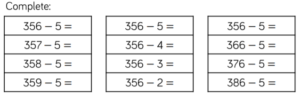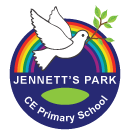Jennett’s Park Maths Curriculum
Download the Maths - Intent, Implementation, Impact Document
Intent
At our school we want pupils to be MASTERS of mathematics. Maths is everywhere and the skills we teach have an impact on every part of pupil’s lives. Therefore, we want to produce students who are confident in their basic number skills as well as fully able to use logic and reasoning to tackle any problem they are faced with. We want our pupils to be active in their learning and our commitment to Mastery teaching shows this. We want our pupils to understand that maths is more than calculations on a page or using their phones to add up and that a fluency with number gives confidence when dealing with life beyond school. We recognise that now there are many ways to access maths and the technology available can allow pupils to explore and share their learning in creative ways. Our knowledge rich curriculum has to be balanced with the opportunity for pupils to apply their knowledge creatively which will in turn help our pupils become confident in their world – skills such as being able to run a budget, think logically and solve problems will allow pupils to flourish and achieve as they move into adulthood. We want our pupils to be fluent with times tables, mental calculations and hope, by Upper Key Stage 2, pupil have the independence and confidence to apply all the knowledge they have learned to problem solving both within maths and .
Implementation
We follow the White Rose schemes of work from Reception to Year 6 which provides a comprehensive progression document for staff to follow to best embed and cover every element of the maths curriculum. The knowledge/skills requirements build year on year to deepen and challenge our learners.
How to Implement the progression document and long term plan
Maths should be taught daily in school with lessons structured around the White Rose schemes of work. In addition to this a quick 10 – 15 minute mental maths session should be taught at least three times a week focusing on times tables, addition and subtraction facts together with key skills such as multiplying and dividing by multiples of 10 (year group appropriate). These skills should be taught in a variety of engaging ways that help the pupils grow in confidence – many of the errors made further up the school are simple calculation errors so embedding a calculation fluency is vital.
Within lessons the Mastery approach calls for all pupils to have the same input. Each new topic should be introduced to all pupil at the same level with STEM sentences and class worked examples used to embed the knowledge. Wherever possible concrete manipulatives should be used by all pupils to assist learning. STEM sentences should be recorded in books by all pupils to enable them to check and embed their learning.
All pupils should be required to answer verbal questions with full sentences with scaffold sentence provided within the planning. For example, a lesson on dividing by 10 might provide sentences such as:
When dividing by 10 you move each digit _________ to the _____. Therefore 340 divided by 10 is ___. I know this because…
I know this because should be used constantly and consistently throughout lessons as it is vitally important for pupils to be able to explain how they have reached their answer. This is important because it provides teachers with insight into the understanding of pupils and it can also highlight misconceptions. Repeating and embedding these STEM sentences benefits all pupils and builds on oracy levels.
Only Mastery approach activities should be taught. These should primarily be sourced from White Rose, Nrich or NCETM and every activity should be labelled with its source, both within planning and in pupil’s books. Activities sourced from other locations should not be necessary given the depth of activities provided by those three sites however, if an activity is sourced from elsewhere it must be mastery based and it must contain a source reference.
Activities set should have a clear and logical purpose, allowing children to see and understand patterns. Example addition activities:




The part whole and bar model methods should be taught consistently throughout the school to embed logical thinking and aid problem solving. White Rose activities use these frequently and the school has invested in online training videos for teachers less confident in bar modelling.
Children should never be provided with worksheets to fill in, activities should be set with care and focussed on progression within each lesson as well as across the week / weeks of learning.
Where possible, variation should be used to create challenge, not just variety. For example:

This question can be given to all pupils in a class and it may be that answering it is enough challenge for some of those pupils. However, those that are able to solve it should not be provided with a different question, the challenge should be provided by variations of the same problem such as:
- How many potatoes could Amir buy with £5? What would the change be?
- How many carrots could Amir but with £5? What would the change be?
- Amir needs to buy twice as many potatoes as he originally thought, how much would it cost now?
- A recipe for soup requires 2000g of potatoes and 5,500g of carrots. How much would this cost?
- The soup recipe feeds four people. Amir is having 8 friends over for dinner, how much would it cost him to make soup for everyone?
The extension possibilities are endless and all provide a challenge to the pupil’s thinking and understanding of the problem.
Impact
We encourage our pupil to enjoy and value the curriculum we deliver. We will constantly ask the WHY behind their learning and not just the HOW. We want learners to discuss, reflect and appreciate the impact computing has on their learning, development and well-being. Providing a well rounded and scaffolded approach to maths will removed the fear that many pupils have as well as embed skills that will serve them throughout their lifetime Implementing a mastery approach will help pupils realise that the skills they learn in maths underpin those that they need for all their other learning. The way pupils showcase, share, celebrate and publish their work will best show the impact of our curriculum. We also look for evidence through reviewing pupil’s knowledge and skills with a termly assessment. Progress of our maths curriculum is demonstrated through outcomes and the recording of coverage in the process of achieving these outcomes.
